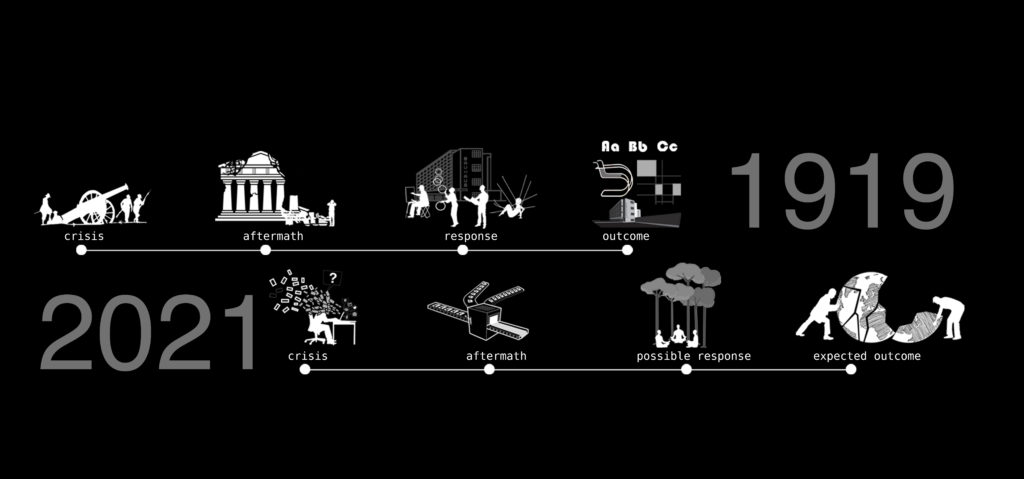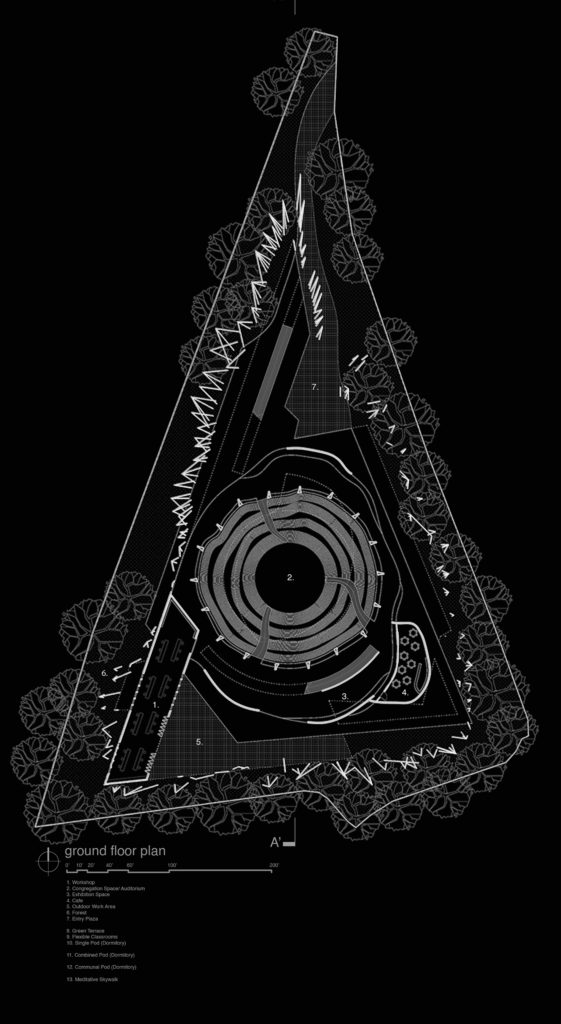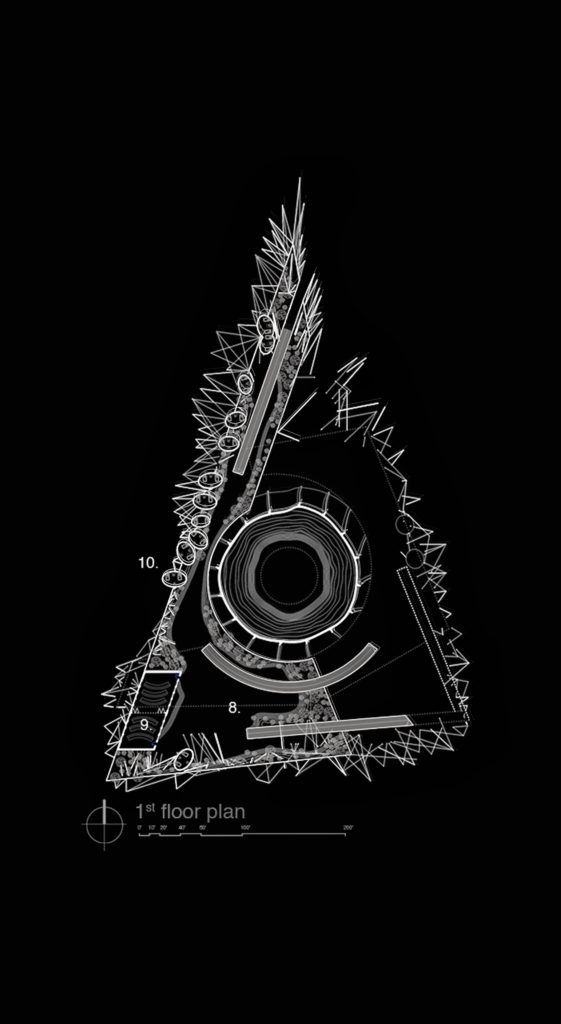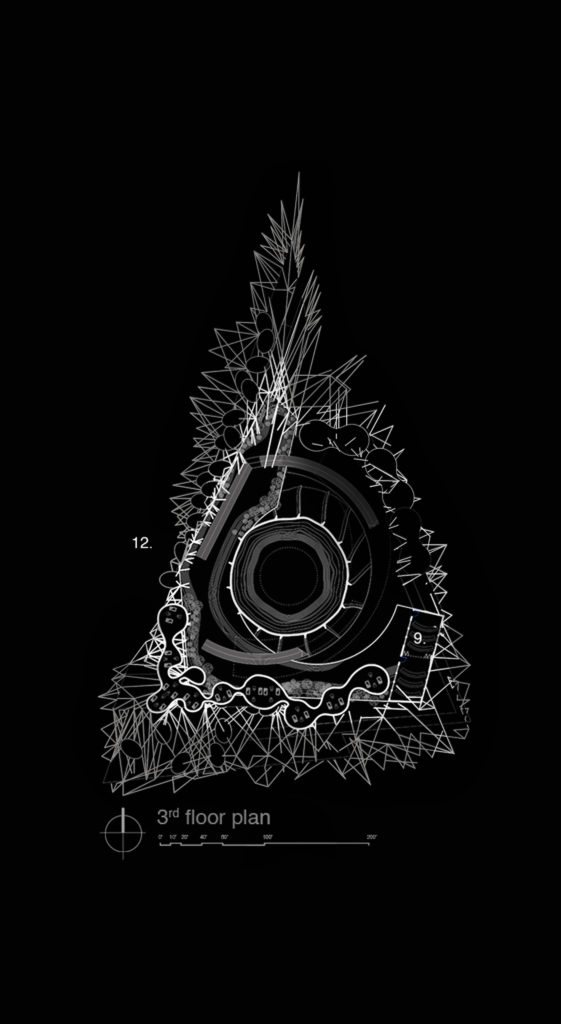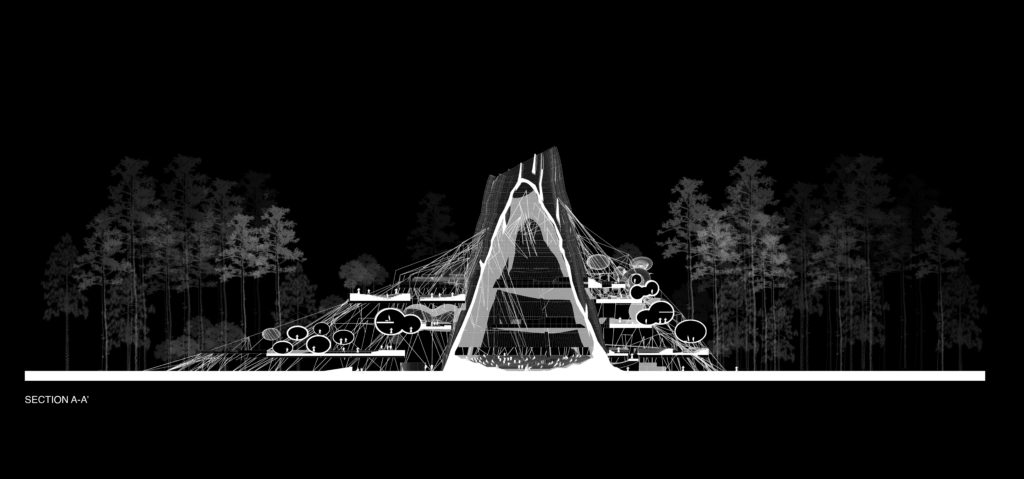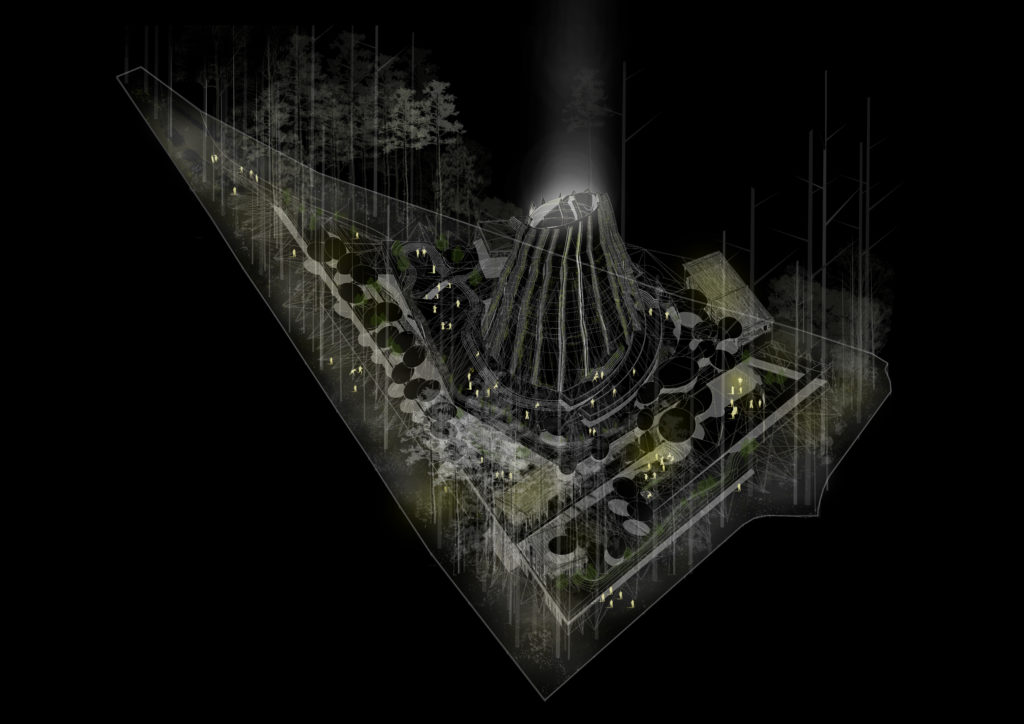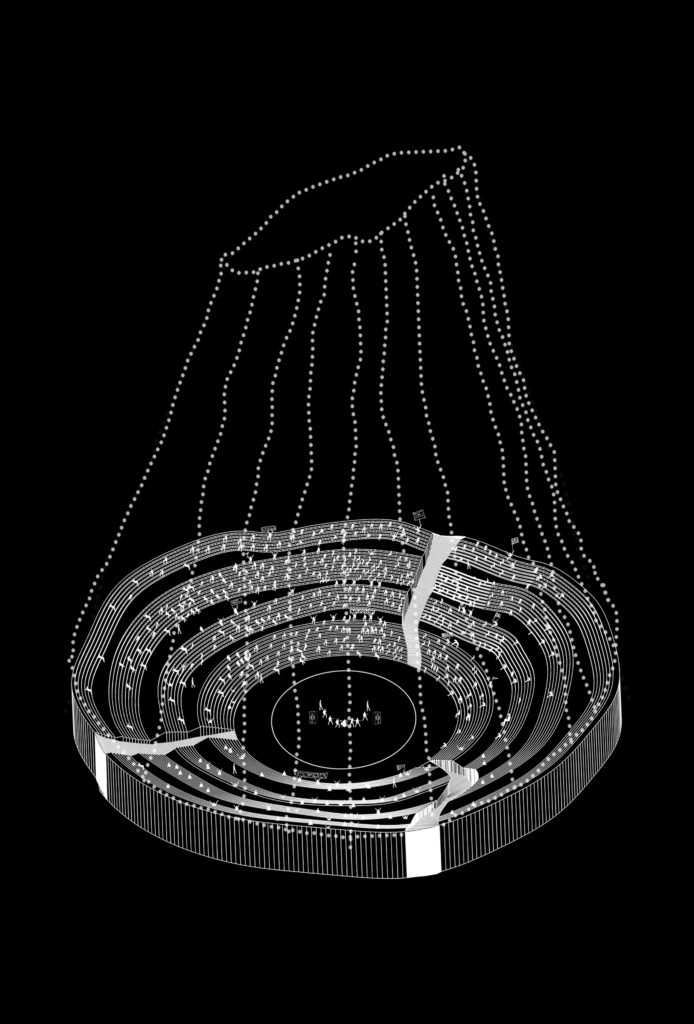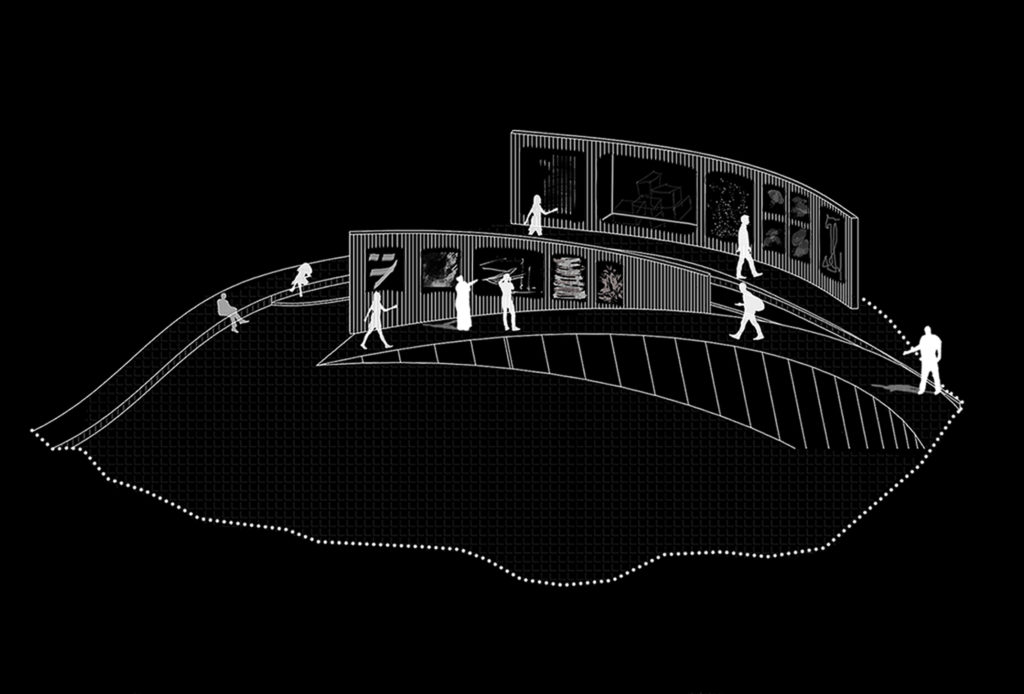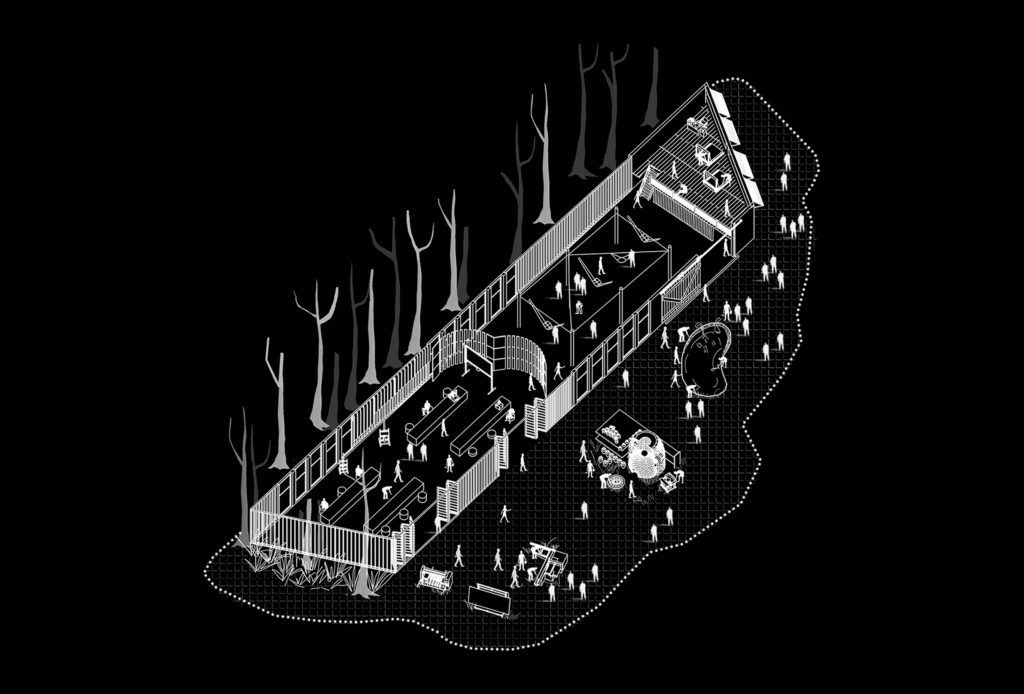NOWHAUS
At the wake of World War I, Architect Walter Gropius felt that the material world needed a radical change to adapt to the new age of industrialization. As much as industrial production helped to rebuild the new world quickly, art and architecture had lost its soul due to the lack of human touch in the production process. As a response to this facelessness, Gropius established a school that would bring together all the different branches of art and architecture and thus overcomes the bleak condition through collaborative explorations.
In the 21st century, there is no great war waging all over the world. However, as author Chuck Palahniuk says, “Our great war is a spiritual war, our great depression is our lives.” Our struggle as a creative individual in this age is one of originality and sincerity. Every person in the technological era is bombarded with information every second of their lives and are gradually losing their individual creative expression due to this information overload. Every creative endeavor becomes a part of a competition to get more “likes” and approval from the people. Thus, all of art and architecture has conformed to a mass culture of generic apathy and competition. The true purpose of creative expression that is- to discover and express one’s distinctive inner faculties and spread empathy and love towards fellow humans- is fading away bit by bit. Taken over by this onslaught of flashier and more attention-grabbing art and craft, the modern man is losing all connections with his inner self, his fellow humans, and most importantly- mother earth.
Therefore, to keep the spirit of Bauhaus alive, we ought to find new means of collaboration between not just artists and architects, but all kinds of enthusiasts. This project intends to reinterpret the Bauhaus slogan in 2021 as one of retreating to our roots by creating a safe haven for creative individuals, separated from their chaotic surroundings. It reimagines the conventional border and hierarchy of the learning space, by creating classrooms that are scattered and immersed in an imposing terraced forest. The forest will draw a line between the chaos of the outside world and the tranquility of the Neo-Bauhaus or the NOWHAUS. This new school is expected to cultivate not only self-realization among its students, but also rejuvenate their inner connection with their fellows and surroundings. The entire studentship experience has been designed as a journey towards one’s innermost selves and towards a sincere expression of craftsmanship and artistry. As a student passes through the layers of contemplative and reflective experiences and completes his journey, he is expected to discover a completely new form of creative expression that is devoid of all artificial classifications like art, music, craft, etc. and be an empathetic human being who knows the responsibility of creation.
Design Development:
Step 1: Separation
During masterplan development, the first step has been considered as “Separation”. In this step, the students are separated from their chaotic surroundings by an imposing forest of Eucalyptus, Douglas fir, Hanging birch, Maple, etc. These trees will create a tranquil forest environment that will facilitate the learning of the students and also flourish biodiversity in the campus.
Step 2: Stacking
In this step, the forest has been stacked into green terraces in a staggering way to establish hierarchy of functions and open spaces. The functions are incorporated within the terraces. These floors were designed using basic geometric shapes inspired from the simplicity of the Bauhaus masters.
Step 3: Unification
The third step of the master plan was Unification. In this step, a central conic volume is incorporated to serve as a congregational space for students from all the levels. The terraces are connected using long and winding ramps for universal accessibility. The basic geometry is fractured and developed to allow vegetation and ventilation.
Step 4: Decomposition
During this stage, the entire volume is wrapped with an elaborate cobweb structure that perforates and blends the solid geometry with its landscape. The entire journey is expressed through the unconcealed outlook of the architecture. The dormitories of the students and guests are imagined as pods hanging from the cobweb.
Designed Spaces:
Exhibition Space:
The exhibition space is located on the ground floor, right next to the congregation space and cafe area. The exhibition space is kept open and flexible, to be able to house a wide range of exhibits starting from paintings, sculptures to large-scale installations. The adjacent outdoor space serves as a breakout area for the exhibition area.
Congregation Space/Auditorium:
The center of the entire complex is marked by a volcanic shaped congregational space or auditorium. This volume connects all the different levels at the center and holds the cobweb structure together.
The space is supposed to bring together students and enthusiasts from all the different levels into a common contemplative space and encourage creative expression and exchange. The mammoth volume has been scaled down by the cinder cone form at the top which points towards the heavens. The space has been imagined to encourage democratic exchange of creative ideas, rather than a performer-audience setting.
Classrooms:
The classrooms are flexible and perforable, allowing the exterior to the inside. They are modular and placed in twos on the first, second and third floor. The two classrooms are separated by a bi-folding door, which can be opened to connect the two classrooms into one big collaborative space.
Workshop:
The workshop space is a flexible polyvalent space that is situated on the ground floor level on the southern side. It is connected to an outdoor working area. The workshop has space to accommodate 3d printers, CNC cutters, milling machines etc. However, it will be more focused on students’ learning hands-on close to nature.
Cafeteria:
The cafeteria is located in the ground floor level, right next to the auditorium, entry plaza and workshop space. It is connected to the outdoor facing the southern forest so that students can take their food and enjoy it in a natural setting. It has a small kitchenette and can serve around 60 students at a time.
Living Pods (Dormitory):
The dormitory has been reimagined to take the form of living pods hanging from the cobweb structure. These pods will give the students the feeling of living inside a natural cocoon.
At first, students will be housed in single-living pods on the first floor. As students pass the freshman year and get across the borders of creative censorship and inhibition, they will be moved to the combined pods on the second floor with a buddy.
Finally, as more time passes, and a feeling of camaraderie develops within the students, they will stay in the communal pods on the third floor. In these pods, the students will be encouraged to share ideas with their fellows during the most private time of the day, as creative discussions should not necessarily be limited to formal learning spaces.
Finally, after passing through all these different levels, it is expected that the students will learn to explore their creativity harmoniously with nature and their fellow humans.
Reg. Code: #4410

